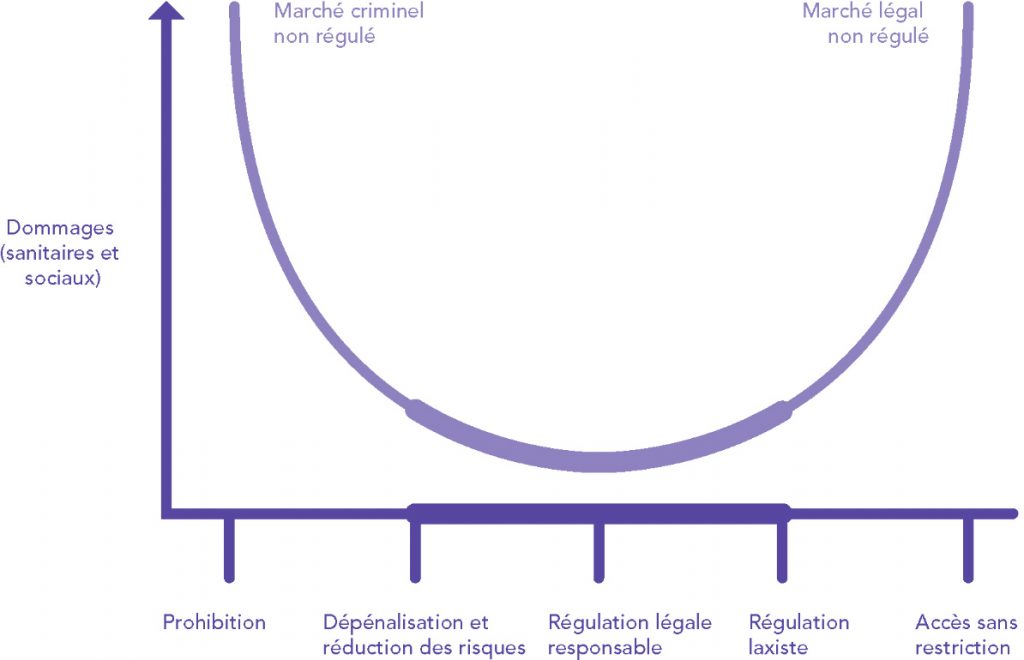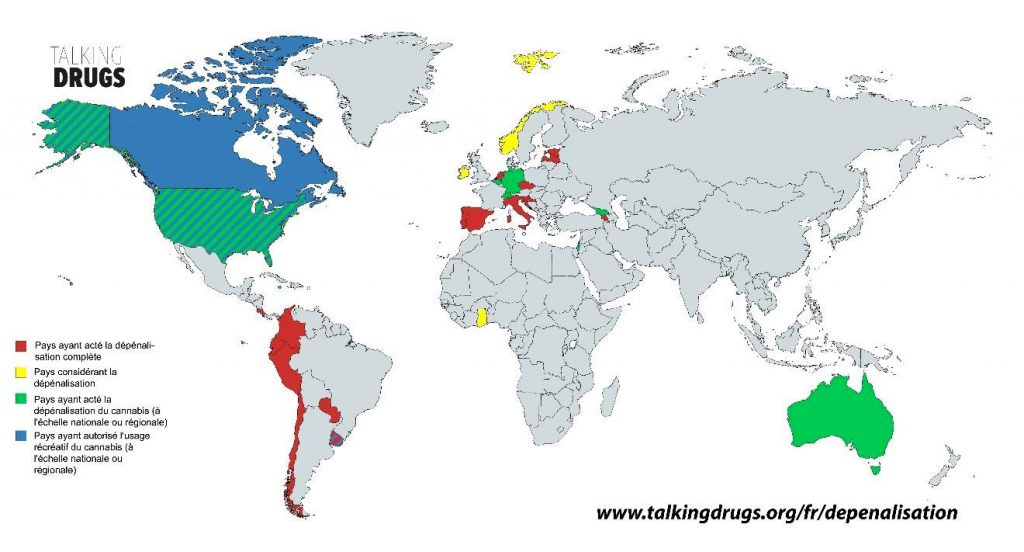Drug Policies
The subject of drugs is particularly sensitive and raises many reactions. In the context of cannabis legalization, opinions differ greatly. It should be noted that just over 100 years ago, opium, cocaine, morphine, and cannabis were legally available. In 1908, Canada legislated to make opium illegal by passing the Opium Act, prohibiting its trafficking. In 1911, cocaine and morphine were added to the prohibited substances, and in 1923, heroin, codeine and cannabis were added to the list. In 1961, the first international convention was signed (UN) to ban drugs and designate them as narcotic drugs. The initial motives were to eliminate drugs and protect the population. The United States also led a major prohibitionist movement in the 1970s, signing the Convention Against Illicit Traffic in Narcotic Drugs and Psychotropic Substances in 1988. Two psychoactive1 substances, namely alcohol and tobacco, of which the United States is a major producer, are exempt from these major conventions.
All substances, whether legal or not, are governed by different levels of regulation, ranging from complete ban (prohibition) to unrestricted access (free market), decriminalization and risk reduction, legal and responsible regulation, and lax regulation. Different psychoactive substances are governed by different policy models. For example, heroin is strictly prohibited, subjecting the person who possesses it to criminal sanctions, while alcohol is widely permitted, even valued, since the government corporation that sells it (SAQ) has even set up a reward program (the Inspire program) to promote its sale. Each policy model has an impact of the health of the population.
It seems that the models generating the highest costs in terms of physical and psychosocial health are the those located at the extremes (prohibition and unrestricted access). Unlike the original intentions, the prohibition regime has resulted in countless consequences for people who use substances, while significantly profiting the illegal market and criminality2. Prohibition regimes, such as the war on drugs (perhaps even on people who use drugs), violate fundamental rights such as the right to health, safety, freedom, and equality. Substance-related arrests tend to over-represent racialized people, cases of simple possession rather than trafficking, women, and Aboriginal people. For example, in 2017, there were 90,625 arrests related to psychoactive substances in Canada. 72% of these arrests were related to simple possession of substance. Arrest rates for simple possession are increasing, while arrests for trafficking are decreasing. Consequently, these data illustrate that police forces target people who use substances instead of those who traffic in them, whereas the legal system is definitely not appropriate for a person who uses substances, even less so if this person has consumption problem.
On the other hand, the tobacco (until the 2000s) and alcohol market also generate numerous consequences in terms of physical, psychological, and social health impacts and costs. Marketing strategies, consumer loyalty and substance recovery have resulted in a trivialization with many impacts.

Many countries around the world have reviewed their policies on psychoactive substances. The map below shows the countries that have decriminalized all substances (red), have decriminalized cannabis (green), or are considering decriminalizing the possession of substances (yellow).

Conclusion
Scientific research has highlighted the deleterious effects of lax substance use policies, both legal and illegal. Establishing a legal and responsibly regulated system would imply the definition of clear rules in public health interest, according to scientific evidence. Such policy revision would refrain from moral motivations and focus on scientific research. Regulations such as sales in designated places, prohibition of sales to under 18s, widespread prevention and education, and neutral and secure packaging are necessary and important. A legal and responsibly regulated system would provide accurate information on the precise composition of substances, eliminate the stigmatization of people who use substances, promote open and neutral language on substances, respect fundamental human rights, and redirect funds raised from the sale of substances to implement programs and policies in public health interest.
1 A psychoactive substance is a substance that alters mental processes, such as cognitive functions or emotions (WHO, 2019). It may or may not be legal and does not necessarily imply addiction.
2 Globally, the Global Financial Integrity organization estimates that profits from the sale of illicit drugs are between $426 and 652 billion (USD)